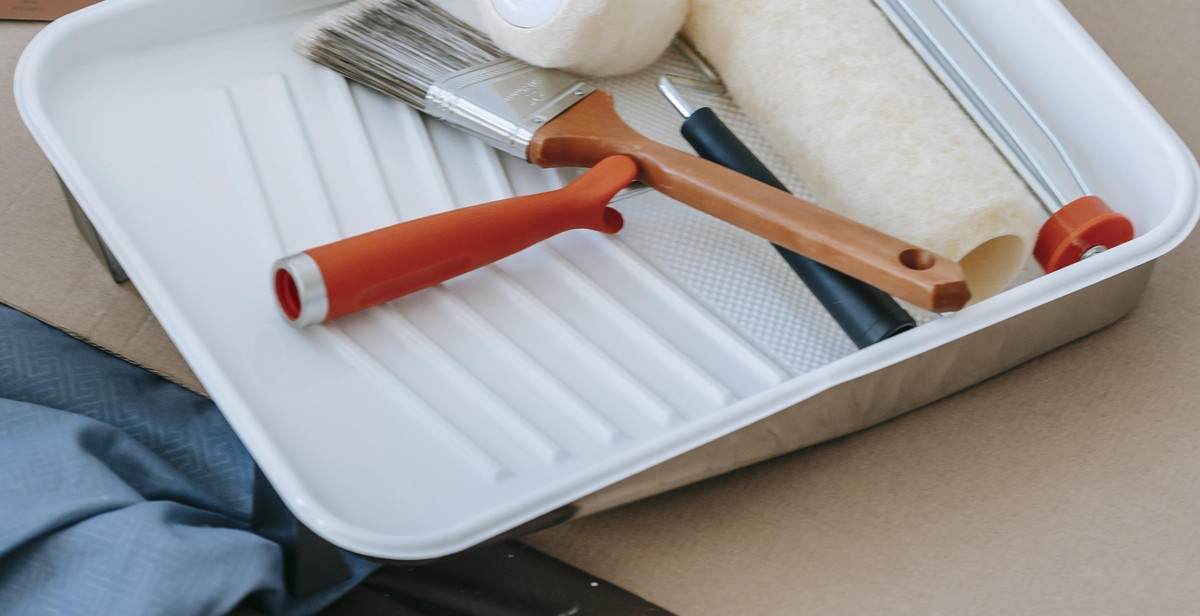How to Repair a Torn Hammock: Steps for Fixing Rips and Tears in the Fabric
There is nothing quite like relaxing in a hammock on a warm summer day. But if your hammock has a tear or rip in the fabric, it can be frustrating and even dangerous to use. Luckily, repairing a torn hammock is a relatively simple process that can be done with a few basic tools and some know-how.
Why Repair a Torn Hammock?
Not only can a torn hammock be uncomfortable and unsafe to use, but it can also worsen over time if left unrepaired. The tear can grow larger and eventually become impossible to fix. Repairing a torn hammock can save you money by extending the life of your hammock and preventing the need for a costly replacement.
Tools Needed
- Scissors
- Heavy-duty needle
- Heavy-duty thread
- Seam ripper
- Patch material (optional)
Steps for Repairing a Torn Hammock
- Assess the damage and determine the size and location of the tear.
- Cut away any frayed edges with scissors.
- Use a seam ripper to remove any stitching around the tear.
- Thread the heavy-duty needle with heavy-duty thread.
- Sew the tear closed using a whip stitch or ladder stitch.
- If desired, reinforce the repair with a patch on the underside of the hammock.
By following these simple steps, you can repair a torn hammock and enjoy many more lazy afternoons in the sun.

Assessing the Damage
Before you can begin repairing your torn hammock, you need to assess the damage. This involves locating the tear or rip and evaluating the extent of the damage. Here are the steps you need to follow:
Locating the Tear or Rip
The first step is to locate the tear or rip in your hammock. This may seem obvious, but sometimes tears can be difficult to spot. Start by laying your hammock out on a flat surface and examining it carefully. Look for any holes, snags, or loose threads in the fabric. If you can’t find the tear or rip, try running your hand over the surface of the hammock to feel for any irregularities.
Evaluating the Extent of the Damage
Once you’ve located the tear or rip, you need to evaluate the extent of the damage. Is the tear small or large? Is it a clean tear or a jagged one? Is the fabric frayed around the edges of the tear? These are all important factors to consider when assessing the damage to your hammock.
If the tear is small and clean, you may be able to repair it easily with a simple sewing kit. If the tear is large or jagged, however, you may need to patch it with a piece of fabric. And if the fabric is frayed around the edges of the tear, you may need to trim it before you can repair it.
By taking the time to assess the damage to your hammock, you’ll be better equipped to repair it properly and ensure that it lasts for many more relaxing afternoons in the sun.

Materials Needed
Tools
- Scissors
- Sewing needle
- Thread
- Sewing machine (optional)
- Measuring tape
Repair Materials
Depending on the size and location of the tear, you may need one or more of the following materials:
| Material | Description |
|---|---|
| Replacement fabric | If the tear is large or in a high-stress area, you may need to replace the entire panel of fabric. |
| Patch | If the tear is small, you can patch it with a piece of fabric that matches the original hammock. |
| Webbing or cord | If the tear is in a seam or a high-stress area, you may need to reinforce it with webbing or cord. |
| Fabric glue | If you don’t have a sewing machine or don’t want to sew the tear, you can use fabric glue to bond the edges of the tear together. |
Before you begin the repair process, make sure you have all the necessary tools and materials on hand. This will ensure that you can complete the repair quickly and effectively.

Preparing for the Repair
Before you start repairing your torn hammock, it is essential to prepare the fabric properly. Proper preparation ensures that the repair work is smooth and lasts for a long time. The following are some of the steps you need to take when preparing for the repair:
Cleaning the Hammock
The first step in preparing for the repair is cleaning the hammock. The fabric should be free from any dirt, dust, or stains. Use a gentle detergent and warm water to clean the hammock. Avoid using harsh detergents or bleach, as they can damage the fabric.
Instructions:
- Fill a bucket with warm water and add a mild detergent.
- Dip a soft-bristled brush into the solution and scrub the hammock gently.
- Rinse the hammock thoroughly with clean water and hang it to dry. Avoid using a dryer as it can shrink or damage the fabric.
Removing Debris and Loose Threads
Once the hammock is clean and dry, inspect it for any debris or loose threads that may interfere with the repair. Use a lint roller or a soft-bristled brush to remove any debris. Trim any loose threads with scissors or a sharp knife.
Instructions:
- Inspect the hammock for any debris or loose threads.
- Use a lint roller or a soft-bristled brush to remove any debris.
- Trim any loose threads with scissors or a sharp knife.
By following these steps, you can prepare your hammock for repair and ensure that the repair work is successful. Remember to take your time and be gentle when cleaning and preparing the fabric.

Repairing Small Tears and Rips
If your hammock has a small tear or rip, don’t worry! It’s easy to fix with just a few simple steps. Here are two methods you can use to repair small tears and rips in your hammock:
Using Fabric Glue
If your tear is less than an inch long, you can use fabric glue to fix it. Here’s how:
- Clean the area around the tear with a damp cloth and let it dry completely.
- Apply a small amount of fabric glue to the tear and press the edges of the tear together.
- Hold the tear together for at least 10 minutes to allow the glue to dry.
- Let the glue dry completely before using your hammock again.
Sewing the Tear with a Needle and Thread
If your tear is larger than an inch, you’ll need to use a needle and thread to fix it. Here’s how:
- Clean the area around the tear with a damp cloth and let it dry completely.
- Cut a piece of thread that’s about twice the length of the tear.
- Thread the needle and tie a knot at the end of the thread.
- Insert the needle through the fabric just below the tear and pull the thread through until the knot stops it from going any further.
- Bring the needle up through the fabric just above the tear and pull the thread through.
- Repeat this process, stitching back and forth across the tear until it’s completely closed.
- Tie a knot in the thread and cut off any excess.
| Method | Pros | Cons |
|---|---|---|
| Fabric Glue | Quick and easy | Not suitable for larger tears |
| Sewing | Durable and strong | Takes more time and effort |

Repairing Large Tears and Rips
If your hammock has a large tear or rip, it may require a bit more effort to repair. However, with the right tools and techniques, you can easily fix it up and enjoy your hammock once again. Here are two ways to repair larger tears and rips:
Using a Patch Kit
One of the easiest ways to repair a large tear or rip in your hammock is by using a patch kit. These kits typically come with a piece of fabric and adhesive. Here’s how to use it:
- Clean the area around the tear or rip with a damp cloth and let it dry completely.
- Cut the patch to a size that is slightly larger than the tear or rip.
- Apply the adhesive to the patch and place it over the tear or rip.
- Press down firmly to ensure that the patch is securely in place.
- Let the adhesive dry completely before using the hammock.
Sewing the Tear with a Sewing Machine
If you have access to a sewing machine, you can also repair a large tear or rip in your hammock by sewing it back together. Here’s how:
- Clean the area around the tear or rip with a damp cloth and let it dry completely.
- Place the torn fabric under the sewing machine’s needle.
- Sew a straight stitch along the tear or rip, making sure to backstitch at the beginning and end of the seam.
- If necessary, reinforce the seam by sewing a second line of stitches next to the first one.
- Trim any excess thread and fabric from the repaired area.
| Pros | Cons |
|---|---|
| Quick and easy | May not be as strong as sewing |
| Does not require special skills or tools | May not be as aesthetically pleasing as sewing |
Both of these methods can be effective for repairing large tears and rips in your hammock. Choose the one that works best for you based on your skills, tools, and preferences.

Conclusion
Repairing a torn hammock is a simple and cost-effective solution to extend the life of your favorite relaxation spot. By following the steps outlined in this article, you can fix rips and tears in the fabric and ensure your hammock is ready for many more lazy afternoons.
Remember to inspect your hammock regularly and address any tears or damage as soon as possible. This can prevent the damage from worsening and potentially requiring more extensive repairs or even a replacement.
When repairing your hammock, it’s important to use the right tools and materials. Choose a strong and durable thread, and consider reinforcing the repaired area with patches or additional stitching.
- Identify the location and extent of the damage
- Prepare the area around the tear
- Sew the tear together
- Reinforce the repair if necessary
- Allow the repair to dry and cure before using the hammock again
With a little patience and some basic sewing skills, you can easily repair a torn hammock and enjoy it for years to come.
